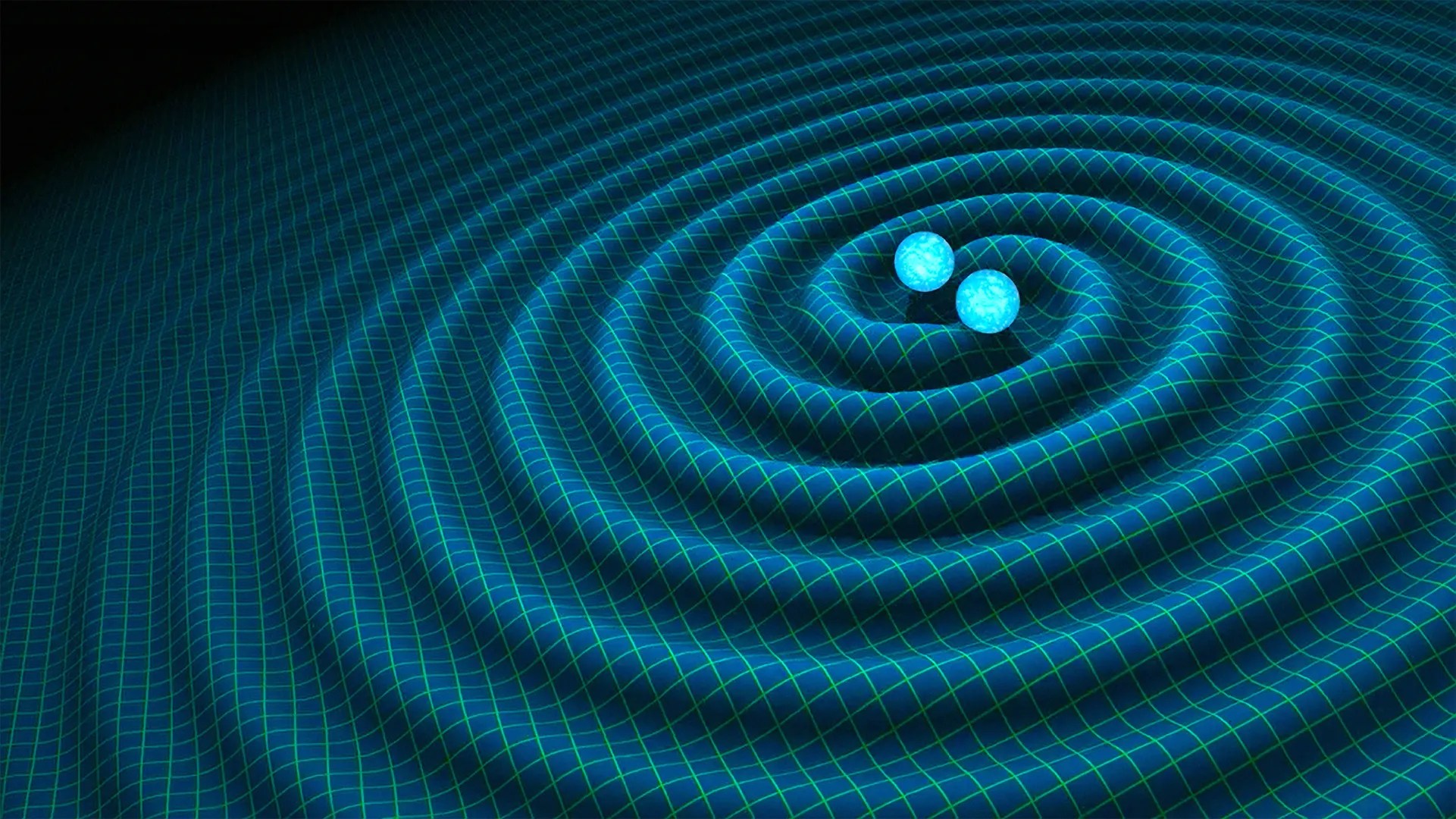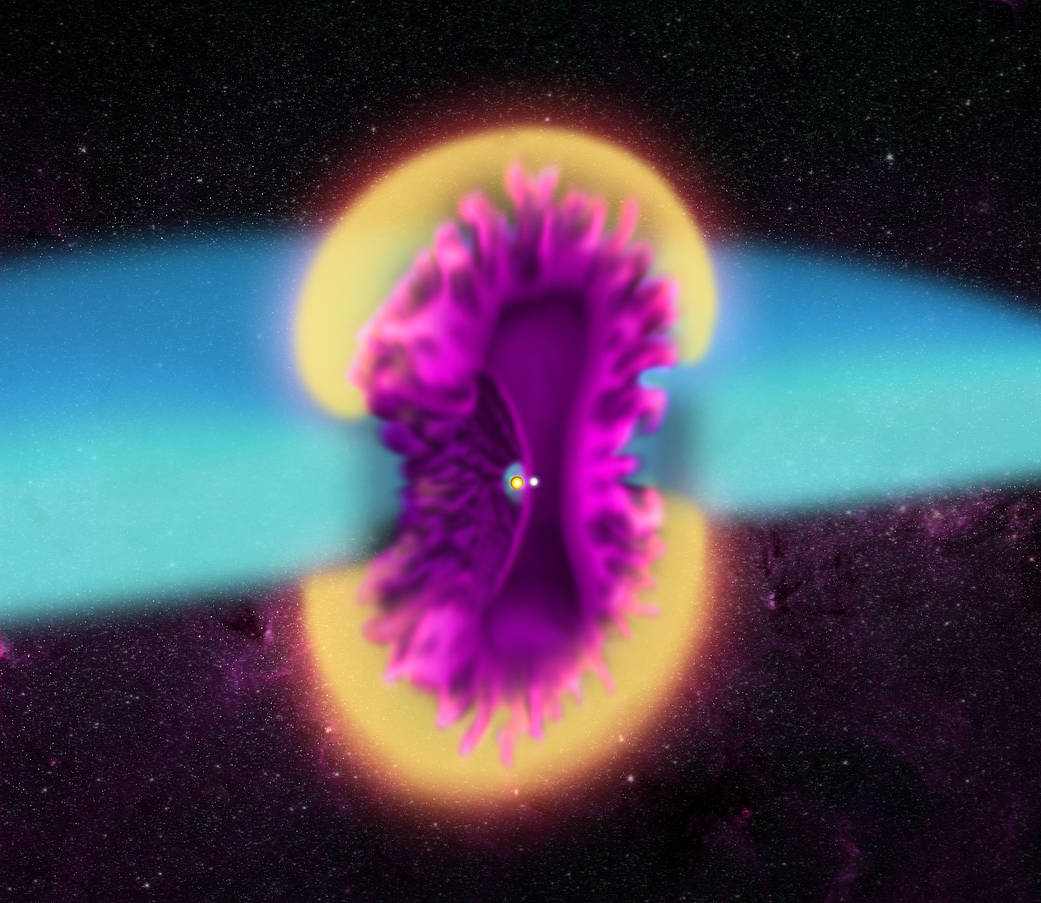For decades, astronomers have known about irregular outbursts from the double star system V745 Sco, which is located about 25,000 light years from Earth. V745 Sco is a binary star system that consists of a red giant star and a white dwarf locked together by gravity. These two stellar objects orbit so closely around one another that the outer layers of the red giant are pulled away by the intense gravitational force of the white dwarf. This material gradually falls onto the surface of the white dwarf. Over time, enough material may accumulate on the white dwarf to trigger a colossal thermonuclear explosion, causing a dramatic brightening of the binary called a nova. Astronomers saw V745 Sco fade by a factor of a thousand in optical light over the course of about 9 days.
In 2014, astronomers finally got their chance to see the phenomena, using the Chandra X-Ray Observatory. Their key finding was it appeared that most of the material ejected by the explosion was moving towards us and developed a 3-D computer model of the explosion that explained the observations. In this model they included a large disk of cool gas around the equator of the binary caused by the white dwarf pulling on a wind of gas streaming away from the red giant.
In the figure showing the new 3-D model of the explosion, the blast wave is yellow, the mass ejected by the explosion is purple, and the disk of cooler material, which is mostly untouched by the effects of the blast wave, is blue. An extraordinary amount of energy was released during the explosion, equivalent to about 10 million trillion hydrogen bombs.
Image Credit: NASA/CXC/M.Weiss


























